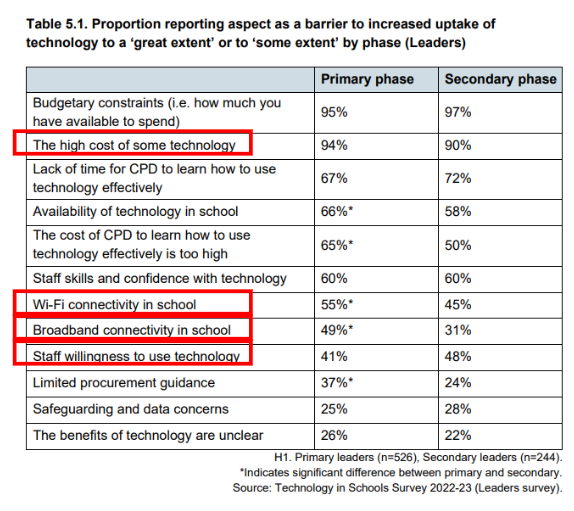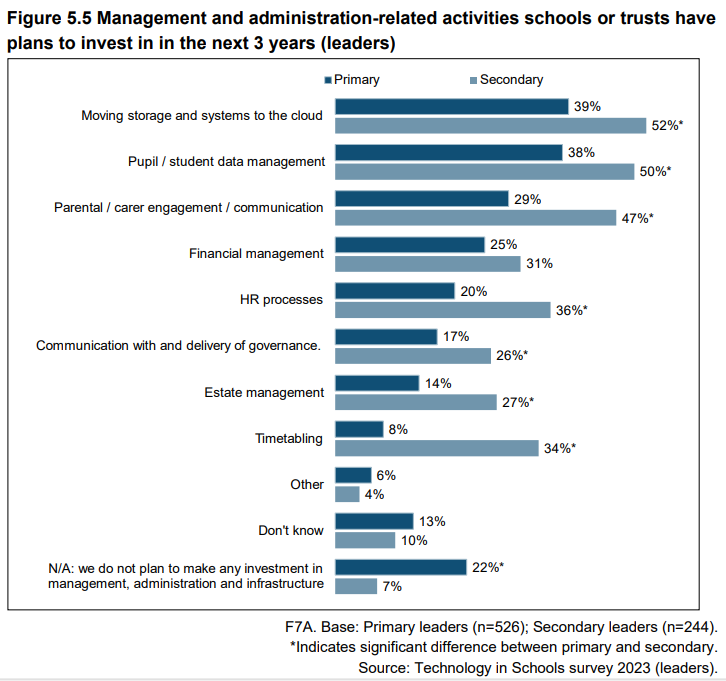Student data privacy problems and challenges to be aware of in 2024
While the shift to technology-reliance for managing student data has brought convenience and efficiency, it also raises concerns about student data...
2 min read
Richard Sambrook Smith 21-Dec-2023 16:36:50

The DfE has kindly given school leaders something to read over the Christmas break and although it’s over 140 pages long, at least it’s not a repeat of recent ‘just-before-the holidays’ releases...
1000+ responses have been collated into the Technology in Schools Survey 2022 – 23 (TISS). School leaders, teachers and IT leads’ opinions have all combined to give a ‘state of the nation’ summary on Edtech in Schools.
Subjects covered by the survey include: strategic planning and decision making, engagement with digital technology strategy in schools, evaluating the effectiveness of technology, the quality and impact of technology use, technology and pupil attainment plus technology and workload.
My background as a school leader (two headships, three deputy headships, great memories, and abiding scars) and IT strategy consultant meant that I might have focused on those issues when writing about such a comprehensive survey. But I believe that there are many schools struggling with identifying and then achieving the appropriate technical infrastructure that their Digital Strategy development – and the appetite of their teachers – most desperately needs.
The majority of the tables presented in the report focus on technical infrastructure. In Table 5.1 below, I’ve flagged the technical issues that act as barriers. Whilst programmes from the DfE such as Connect the Classroom are making an impact on schools in rural / improvement areas, it seems like there is much still to do to provide the connectivity infrastructure into and within schools (broadband and Wi-Fi) necessary for effective deployment of EdTech and increased confidence for staff users. It is disturbing when you hear staff say that they don’t dare to use something because they can't rely on it working. 
It is widespread practice for schools to ‘stretch’ the length of the period they keep technology in service. For end-user devices this did not use to be a problem, though the 10 years-old computer suite we saw recently in a primary school is probably a ‘stretch-Armstrong’ too far!
More recently as security patches within OS upgrades are proving crucial in the cyber-security fight, the age and capacity of these devices are more important than ever. Whilst the traditional interactive whiteboard seems to go for ‘nearly’ ever, the school’s active infrastructure is not as forgiving. Warranties and support periods rarely last more than five years and from then on, a school is loading itself with risk. Poor back-up protocol adds fuel to the fire. Cloud-based services and storage (such as an MIS) might mean data is retrievable, but the amount of time, money and effort that goes in to lost productivity or recovering backups, prevention is the best cure.
To metaphorise to excess at Christmas is forgivable so I hope I’m allowed to say that buying a super-fast car is a waste if the road is either pock-marked with potholes or consistently traffic-jammed or under repair.
Schools do have plans for investment over the next 3 years: both in ‘front-line’ and ‘back-office’ areas. Though it remains the case – despite the ideas presented in the previous paragraphs - that it is ‘end-user’ devices that will be the focus for investment. 
The report highlights the impact of the DfE’s Digital and Technology Standards but flags the fact that a considerable percentage of key staff have a limited awareness of them – something reinforced in other recent surveys such as the BESA/NAACE review earlier in 2023.
On reflection, the DfE standards coupled with the information presented in this survey report, could be used by schools to give themselves a ‘benchmark’ score, working out where they would place themselves in the improvement cycle. If your self-review suggests things aren’t great, then at least you know where you’re starting from and where you intend the eventual destination to be! They are also useful areas to consider for MATs when they are conducting their ‘due diligence’ before taking new schools into a Trust and attempting to ‘de-risk’ the transfer.
If you want help with these sorts of issues, then that is what we do and have been doing for the last 20 years.
The TISS will be added to our list of DfE-published reports and guidance related to IT with the following recommendation: 
.png)
While the shift to technology-reliance for managing student data has brought convenience and efficiency, it also raises concerns about student data...
%20(1).png)
Although a classroom in the 2020s might still be recognisable to a child of the 1920s, the world of education is changing rapidly. Gone are the days...

Here is blog two in our series around the DfE report on Implementation of education technology in schools. The first blog, ‘The value of internal...